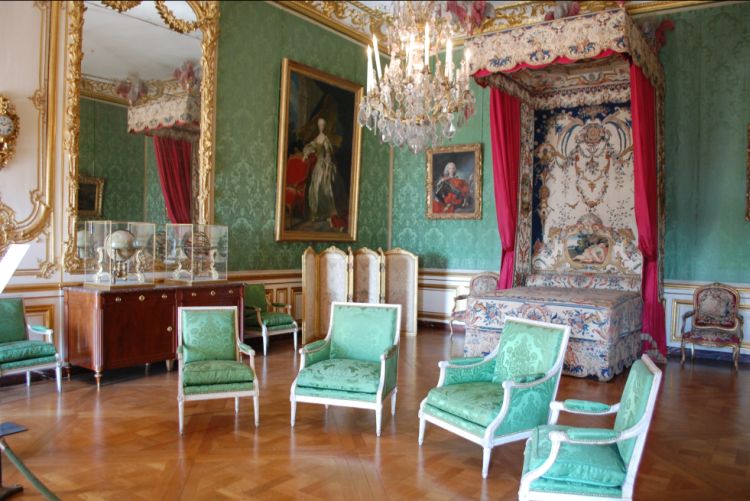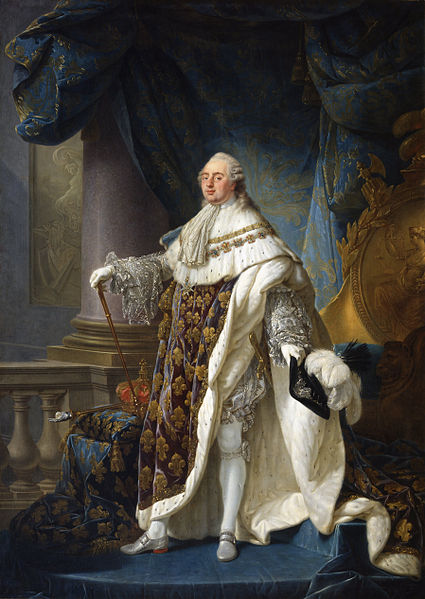Versailles was, therefore, a crucible where the most abominable vices were formed and developed alongside the most admirable virtue. What was it there, in the Versailles environment, architecture, in the court’s atmosphere which caused such opposing and simultaneous effects? This is a starting point for a critique of the “Ancien Régime” which would be very interesting to make.
Madam Louise’s idea of entering the convent is very beautiful. It seemed that in so doing she would undermine resistance at court because, after all, only one sister would be left leading the good faction. But she understood very well that prayer and penance are worth a lot more than action. She understood that a shining example is worth far more than a hundred thousand words, a hundred thousand contacts, a hundred thousand relations that do not have the weight of this example. And she wanted to give this astonishing lesson to the world of that time, and especially to the French court.
You need to go to Versailles to understand how exquisite it was. There is no detail in the castle’s architecture, furnishings, decoration, etiquette, the princesses’ lifestyle that failed to represent the most exquisite and extreme refinement of the art of pleasant living. Good taste was taken to the last limit. The music was magnificent; the food, superb; the comfort, extraordinary; the beauty of the whole, incomparable; the splendor of life, etiquette and style that developed there, wonderful! The life of a princess was all that you could imagine more lively, cozy and opulent, with all the refinement of court.
This is the example that Madame Louise de France wanted to give: to leave behind a lifestyle that was so sophisticated that the greatest empresses of the past would feel like churlish peasants if they only knew it, compared to a French princess of the Ancien Régime. Yet she wanted to leave the Versailles lifestyle to plunge – for it is a real precipice – into the lifestyle that is its direct opposite!
Imagine the silks that the princess wore, the brocades, the lace, and compare that with the thick dress of a Carmelite. Imagine the golden and silver utensils, the most magnificent porcelains from Sevres, compared to the grounded stone dish of a Carmelite….
Imagine the princess’s room, her magnificent bed, and the wooden bed in the Carmelite’s cell, where you cannot even have a bench. Imagine those halls of Versailles and compare them with the Carmelite convent, with no chairs to sit down because the Carmelites sat on their own heels. Imagine that cuisine, a masterpiece of French gastronomy which brought world culinary art to its height, and consider the fasts, penances, macerations and mortifications of a Carmelite nun.
Yet all that is nothing compared to the following aspect: the princess was accustomed to command, to sit in the front row in all circumstances. Now, to go from this situation to a Carmelite’s and become a little more like a slave, without self-will, unable to do anything she wanted, with her will transferred to a superior who could do with her as she pleased at any time, and she, bowing down in obedience, cleaning the floor, compacting the garbage, sewing, and struggling to have them give her these tasks as they were loath to do so because she was a daughter of the king, coming from the unprecedented pomp of Versailles!
You can imagine how all this stunned all of Europe at the time; you have heard how Pope Clement XIV wrote Madam Louise a letter rejoicing over the fact that his pontificate had been glorified by such an event. The explosion this fact produced at court was truly incomparable. It was like a strong punch to the jaw of impiety inside the court. From that moment on, impiety languished and tended to perish, unable to raise its head because it was demoralized. That example had been way too strong. At the Carmelite convent, Sister Louise could have easily lived, if not in comfort, at least in the tranquility of a reclusive life. However, that is not what she did.
Her biographer emphasizes very well, while not giving great detail that she continued to intervene in the affairs of the kingdom, and especially in ecclesiastical matters. At that time the king had the right to propose to the Pope the names of bishops, archbishops and cardinals to be appointed. He had a great deal of interference in the administration of ecclesiastical affairs and also had the prerogative of pursuing heresies, with his title of “Christian King”. Through her informants, Madam Louise of France accompanied in detail everything that went on in court. And she never stopped intervening with the king when he took a bad step.
In order to know who King Louis XVI was, it is enough — at least for those with a psychological sense — to look at his face in that excellent engraving depicting him in coronation vestments (see photo above). The mantle is superb, the costume magnificent, the velvet stupendous, the gesture stylized, the elegance regal, the strength unparalleled. Yet the face is that of an idiot… It is enough to look at it to see why that man committed all those follies throughout his reign and took France where she wound up… Nevertheless, Louis XVI venerated his aunt and would often change his mind when she sent him messages.
To Be Continued










